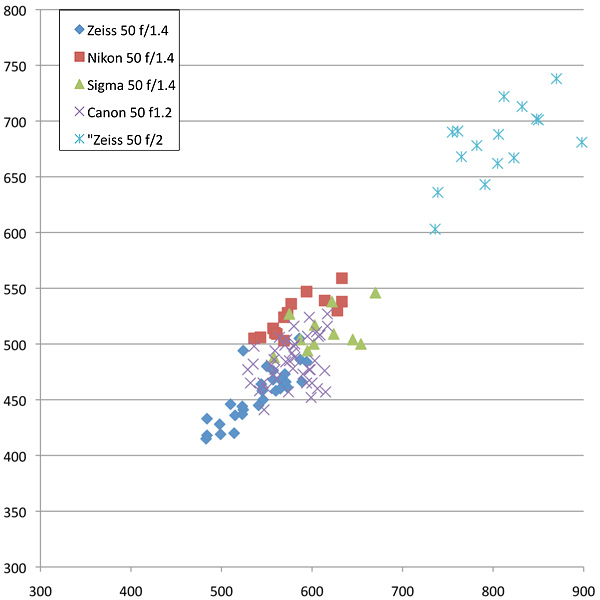dilbert said:
neuroanatomist said:
[But I do think their Scores are biased, and that bias currently happens to favor Nikon. Their Sensor Score emphasizes low ISO performance (2 of the three metrics that factor into the sensor score are considered only at ISO 100), and the score is weighted but they don't disclose the weighting.
That's understandable because low ISO is where the sensor's best performance is (or should be) and everyone that I know wants the best possible IQ in their pictures.
Similarly, our tendency is to shoot at the lowest workable ISO because the lower the ISO, the better the IQ. Even people that shoot at ISO 6400 regularly only do so because they have to, not because they want to. If the lighting was such that they could use ISO 1600 instead and get the same outcome, then they would.
It may be logical but it's still biased. It would be logical to bias a 'car score' toward fuel economy (because everyone wants that, right?), which usually goes hand in hand with smaller engine capacity and lower curb weight. But if you need a high towing capacity or room for three car seats, that bias works against you.
You prove my point when you state that shooting at ISO 1600 is better than ISO 6400. Neither of those is ISO 100. Maybe 95% of your shots are at ISO 100, but the majority of my shots are higher than that. If my average ISO is 1600, and 'sensor A' performs better than 'sensor B' at ISO 100, but worse at ISO 1600, then DxO's biased Score is not helpful to me.
Bias isn't always bad...as long as the nature of the bias is known. But a biased score with unspecified weightings is not useful. Do you really believe that a D800 delivers better IQ than a Phase One IQ180?
dilbert said:
They base their Lens Score on testing in 150 lux, meaning that transmission (T-stop) trumps other measures (sometimes to the exclusion of logic, is the 50/1.8 really a better lens than the 600/4L IS II?), and that lenses tested on bodies with better high ISO performance or more MP (so that noise is reduced when converted to their 8 MP print scale) are given a better score.
It comes down to how do you define "better."
DxO measure a lens in terms of its ability to reproduce an image. For the software that they write, they don't care about how well the IS works or if it breaks when you take it off the camera for the 10th time. Their focus is on how well the lens is able to produce an image so that they can make the appropriate corrections in their software. They also don't care as much about price. If you care more about the build, whether a lens is weather proof'd, etc, than you do about the IQ then yes, the DxO scores are meaningless.
"DxO measure a lens in terms of its ability to reproduce an image.". Yes, they do - and as I've repeatedly stated, their measurements are useful (when correct). Of course they're not measuring IS or build quality for lenses, any more than they measure fps or AF performance for their sensor score - no one has suggested that, and your reference to it is a red herring.
But, while DxO
measures lenses in terms of optical performance, the DxO
Lens Score has very little relationship to those measurements, but instead is based primarily on
performance in 150 lux illumination (e.g., dim warehouse light levels). If their Score primarily represents a lens' 'ability to reproduce an image' does it make sense to you that the 50/1.8 II can reproduce a better image than the 600/4 II? Would you agree that lens performance generally improves when a lens is stopped down a bit? If so, does it make sense that the 50/1.8 II is, "Best at 50mm f/1.8," as DxO states right next to the Lens Score?
Furthermore, sensor performance influences the Lens Score, as in tron's example of the same Zeiss lens in Canon vs. Nikon mount, with optical metrics the same (or very marginally better on the Canon) scoring 10% higher on Nikon.
Sure, you can define "better" as better for shooting in a dimly lit warehouse. But that makes little sense as a basis for a Score used to compare lenses - an f/1.8 lens doesn't 'reproduce an image' better than an f/4 simply by virtue of transmitting more light. Image Quality is not defined primarily by a lens' maximum T-stop. The Lens Score is biased and misleading,
especially when DxO sticks that score on top of a list of optical metrics, which implies those metrics are somehow 'summarized' by that score when that's not at all the case.
I like DxO, I use their RAW converter as part of my workflow, and their sensor and lens measurements are useful, too. But...their
Biased
Scores are just that...BS = bovine scat = cow excrement.

